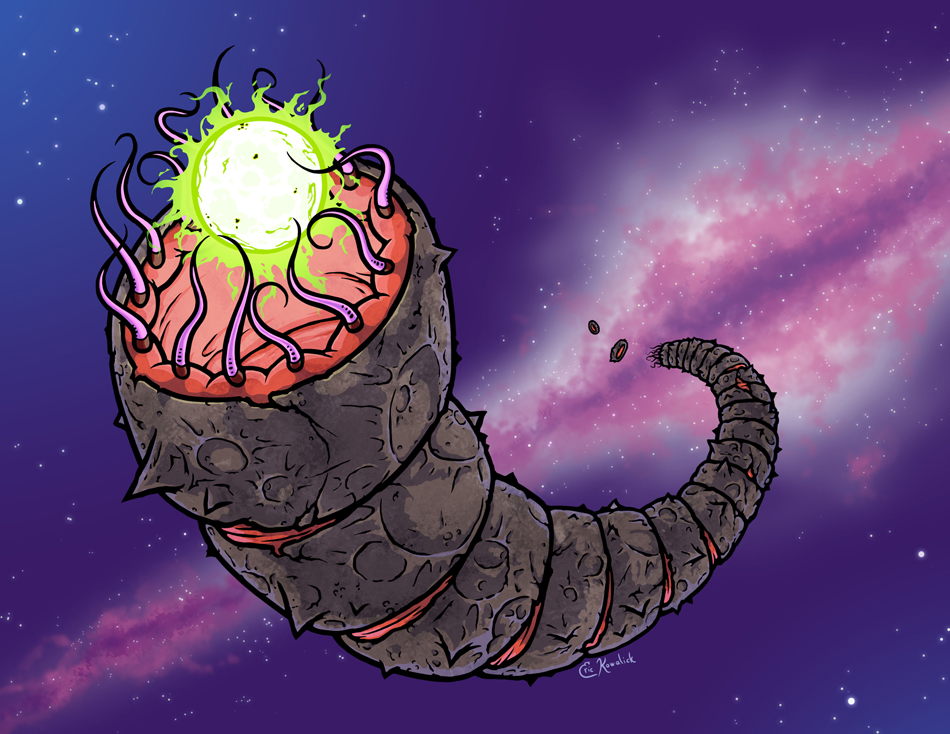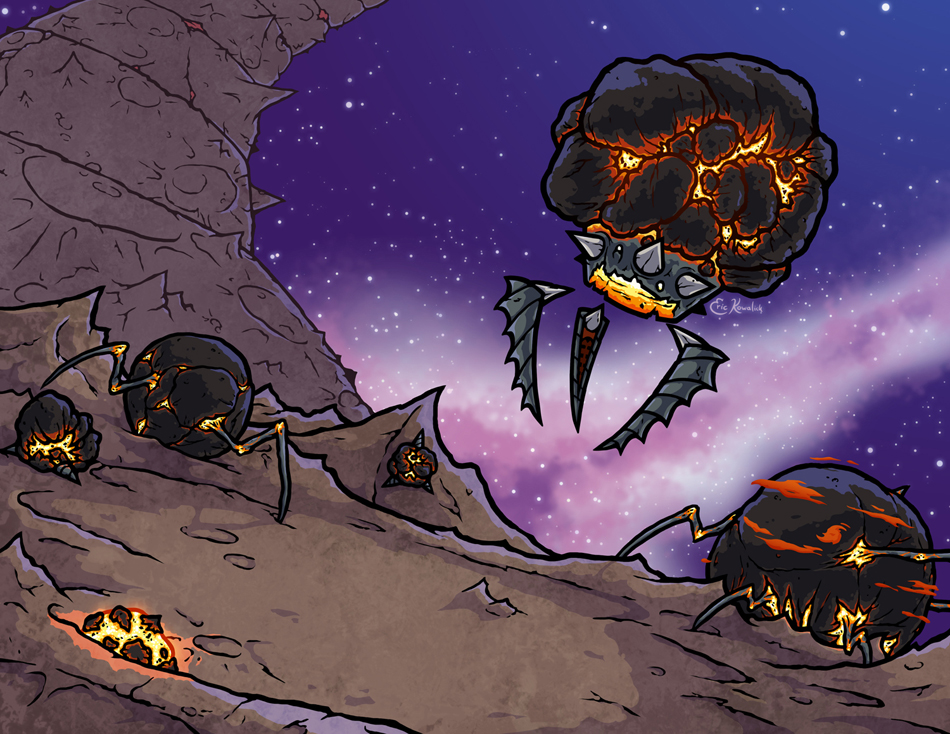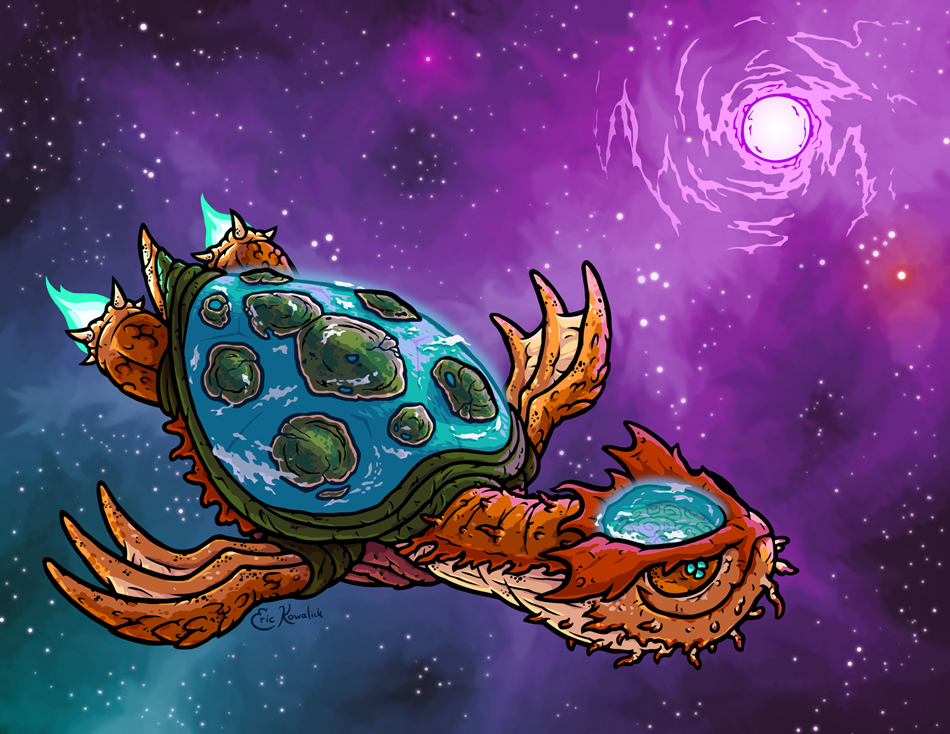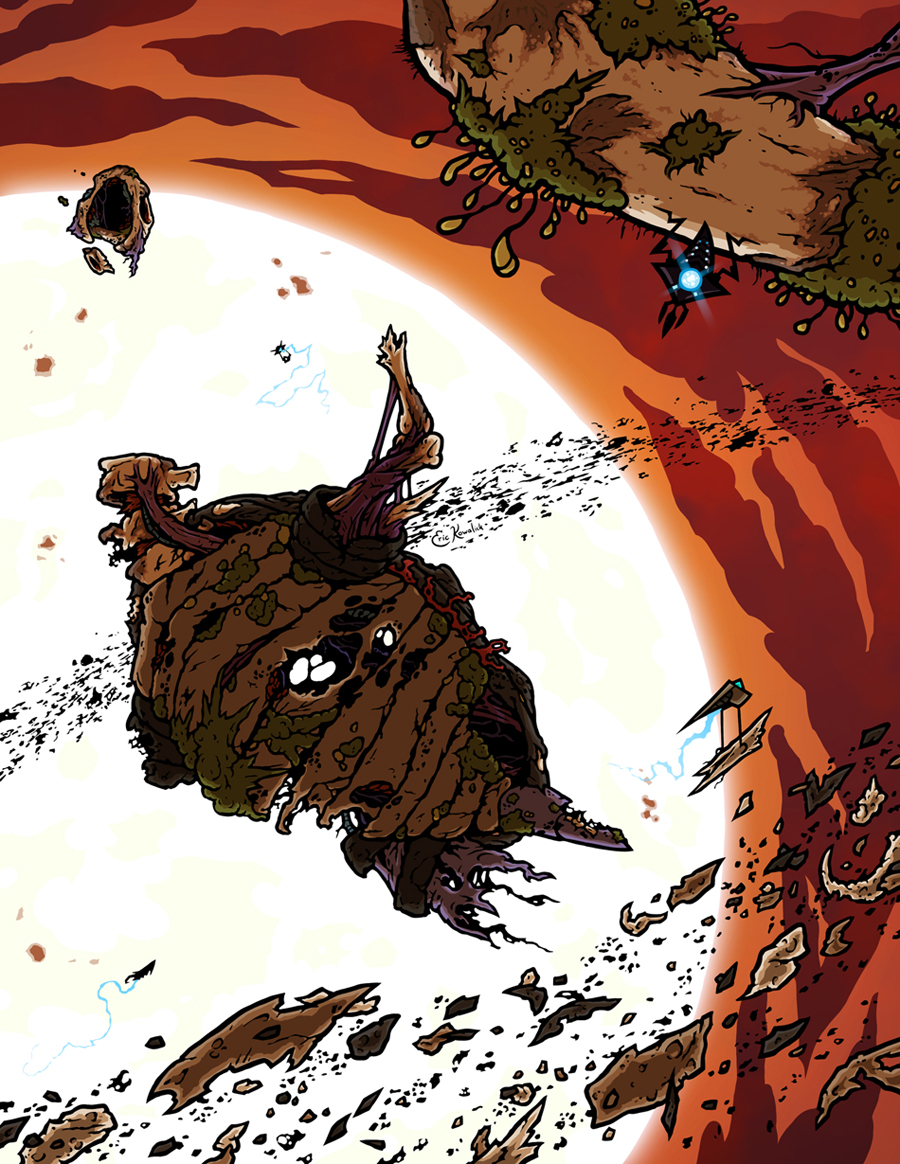Stellar Worm

The Stellar Worm leads a fairly simple life of feeding off of stars. It doesn't actively digest them --the vast distances between potential meals prohibits that-- instead the worm swallows up a star, joins it's ends together forming a perpetual loop, and passively absorbs all the energy the star produces. Oftentimes lifeforms develop (or re-develop) on the insides of the Worm, either taking advantage of the captured star or parasitizing their cosmic host. Regardless, they are too infinitesimal for the Worm to care or even notice.
The Worm itself is, in a sense, a colony of clones - each segment capable of living on its own, able to regenerate its own chain of copies. As such the Worm is able to shed and reconnect bodies should the need arise, as in case of injury or if it grows too large. In fact, once a Worm senses its star is nearing its end, the beast will disconnect all its segments at once, each one heading off towards a new star to start the cycle anew.
___________________
Each of the Worm's segment's is about as wide as the star it's eating, and is in total 20 segments long (not counting the two free segments, of course). The Sun is ~865,000 miles in diameter; for simplicity's sake let's say each worm segment is 1,000,000 miles, giving us a 20-million-mile worm. Fully stretched out, this incomprehensibly vast cosmic destroyer's rear end would reach aaaaall the way to... well, not even Mercury (which is, on average, 35 million miles from the Sun). Mr Worm would need be nearly double in size just to reach to the closest planet -- and this is with rounding the star's size up a couple hundred miles. Space is HUUUUUUUUUGE!
Planesite

Virtually all lifeforms in the universe are parasitised by another, even those of the cosmic voids. One example is the “Planesite”, a tick-like creature that feeds on super-massive organisms like Stellar Worms and World Turtles, growing so large that they are capable of becoming planets in their own right. Truly colossal Planesites may themselves become infested with other, smaller Planesites.
The majority of a Planesite’s life is spent dormant, aimlessly drifting in space until it happens to cross paths with a potential host. They are hardy beasts, but even with a life expectancy of a few billion years the wait can be and often is fatal. The high mortality rate is countered by sheer numbers; Planesites don’t reproduce in the truest sense --they cannot spare the energy-- but rather any chunks broken off a living creature is able to regrow into a new Planesite. Coupled with their natural resilience, a cataclysm that would fell a normal planet would instead ‘spawn’ thousands more Planesites, all without even killing the original.
___________________
Scale in space is kinda annoying. The *intent* here is that the planet-sized parasites are on an incredibly tiny portion of the Stellar Worm -- i.e., the foreground is only the size of a pixel of the background, and the rest of the Worm appears clean only because it's so unfathomably huge that the trillions and trillions of "little" hitchhikers are invisible.
World Turtle

An evolutionary arms race for sunlight lead higher and higher into the sky, until one species left the planet entirely. Freed from all competition, they swelled to impossible sizes to catch as much of the sun’s energy, which had the added benefit of allowing symbiotic biospheres to develop. What started as a bitter fight over the star ended in a harmonious partnership.
The World Turtles enjoy a peaceful, of lonely, life, floating around their homestar without a care... occasionally to their detriment. World Turtles can be remarkably dim due to the lack of predators or competitors; it is not unheard of for one to blissfully swim into a meteor shower or for another to attempt eating its homestar. Still, the average World Turtle lifespan last quite a few billion years, with a lucky few even hitting the 10 Billion mark.
World Turtles breed the traditional way, which can be catastrophic --though never *completely* fatal-- to their biospheres. Some suggest this result is intentional, a way to keep numbers down. Either way it soon recovers, and the World Turtle lays an egg. Often times the egg hatches within the same star system, as a single sun can support several thousand turtles with room to spare. But occasionally the egg is set off towards a new star, it’s hard shell capable of protecting the unborn turtle --and a miniature biosphere-- for the long journey.
End of the World Turtle

...but life goes on for the World Turtle's biospheres. The loss of their patron makes for a harsher existence, but its remains continue to serve as a viable home for eons to come. Occasionally, inhabited fragments may drift off and strike other worlds (turtle-based or not), seeding them with new life.






